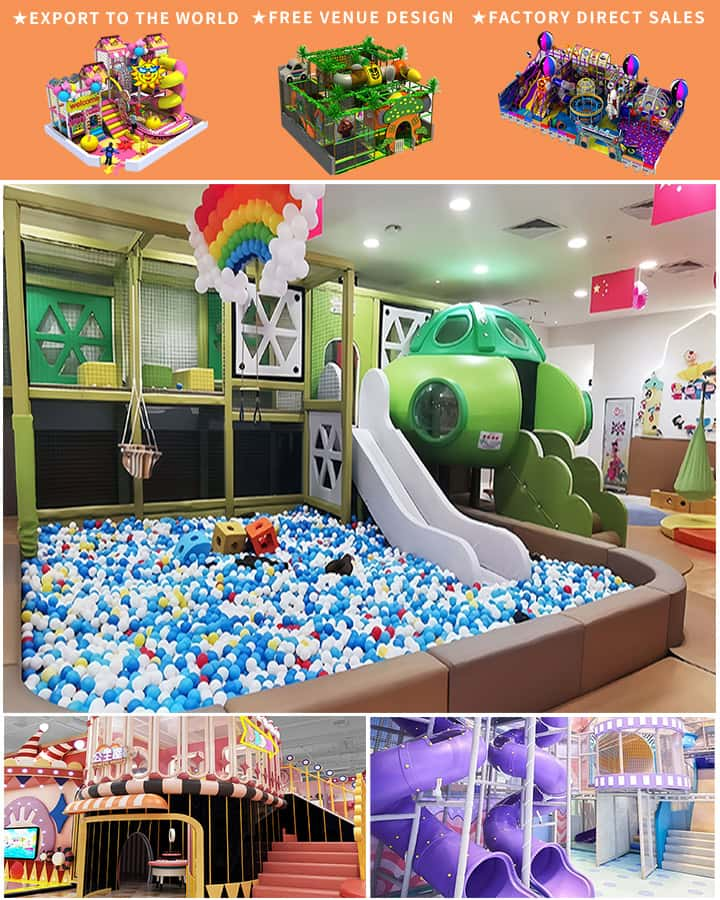Indoor playgrounds have swiftly become a favorite destination for families seeking fun, safe, and stimulating environments for their children. Whether in community centers, malls, or private establishments, these vibrant spaces offer endless opportunities for physical activity, social interaction, and imaginative play. This article delves into the essentials of indoor playground construction, offering insights into planning, safety measures, and design considerations to help you create an exceptional indoor playground experience.
Planning Your Indoor Playground
Assessing Space and Needs
The first step in indoor playground construction is assessing the available space. Identify whether the area can accommodate various attractions like slides, climbing walls, ball pits, and interactive games. Consider the height and square footage requirements for each element. It’s also crucial to evaluate the target age group and specific needs of your audience. A well-planned layout ensures that children of all ages and abilities can enjoy the space safely.
Budgeting and Funding
Constructing an indoor playground can be a significant investment. Draft a detailed budget covering construction costs, equipment purchase, safety certifications, and ongoing maintenance. Securing funding may involve exploring loans, grants, or partnerships with local businesses and community organizations. Ensure financial stability before embarking on your project to avoid any mid-construction delays.
Safety First: Compliance and Standards
Regulatory Compliance
Safety is paramount in indoor playground construction. Adhere to local building codes, fire regulations, and health standards. Consult with professionals experienced in recreational facility compliance to ensure all aspects of your playground meet legal requirements. This includes proper ventilation, emergency exits, and non-toxic materials.
Soft Flooring
 To minimize injuries from falls, install appropriate soft flooring throughout the playground area. Options include rubber mats, foam tiles, or carpeted surfaces designed to cushion impacts effectively. These materials should cover not only the main play areas but also entry and exit points.
To minimize injuries from falls, install appropriate soft flooring throughout the playground area. Options include rubber mats, foam tiles, or carpeted surfaces designed to cushion impacts effectively. These materials should cover not only the main play areas but also entry and exit points.
Equipment Safety
Ensure all playground equipment meets national safety standards set by organizations like the American Society for Testing and Materials (ASTM) and the Consumer Product Safety Commission (CPSC). Regular inspections and maintenance are vital to identify and rectify potential hazards such as sharp edges, rusted parts, or loose fittings. Train staff to recognize signs of wear and tear and address them promptly.
Designing for Fun and Engagement
Theme and Aesthetics
A cohesive theme can enhance the appeal of your indoor playground. Popular themes include jungle adventures, pirate ships, or space explorations. Use bright colors, engaging wall murals, and themed play structures to create an immersive environment. Incorporate sensory elements like interactive panels, music, and textured surfaces to stimulate children’s senses.
Inclusive Design
Make sure the playground is inclusive and accessible to children with disabilities. Features such as wheelchair-accessible carousels, sensory-friendly areas, and adaptive swings can make the experience enjoyable for everyone. Collaborate with experts in inclusive design to integrate these elements seamlessly.
Educational Opportunities
Incorporating educational components can add value to your indoor playground. Interactive exhibits, storytelling corners, and science-based activities can engage children while promoting learning through play. Partnerships with local schools and educators can provide additional resources and programming ideas.
Sustainability in Indoor Playground Construction
Eco-Friendly Materials
Opt for sustainable materials wherever possible. Bamboo flooring, recycled plastic equipment, and natural rubber mats not only reduce environmental impact but also often offer higher durability. Choose energy-efficient lighting solutions and HVAC systems to minimize the carbon footprint of your facility.
Waste Management
Develop a robust waste management plan to handle trash generated by visitors. Install recycling bins and encourage eco-conscious behavior among patrons. Implement practices to recycle or repurpose old playground equipment to reduce waste.
Marketing and Community Engagement
Promotions and Events
Attract visitors through targeted marketing campaigns highlighting unique features of your indoor playground. Host special events like birthday parties, holiday celebrations, or themed weeks to generate buzz and repeat visits. Utilize social media platforms to showcase user experiences and promote upcoming attractions.
Community Partnerships
Build relationships with local communities, schools, and organizations. Offer discounted rates or free access for community groups and hold fund-raisers or charity events within the playground. Engaging with the local community fosters loyalty and positions your playground as a central hub for family entertainment.
Conclusion
Constructing an indoor playground involves meticulous planning, adherence to safety standards, creative design, and a commitment to sustainability. By focusing on these key elements, you can create a dynamic and welcoming environment where children can play, learn, and thrive. Remember, the success of your indoor playground lies not only in its construction but also in the joyful memories it helps to create for families and communities.




